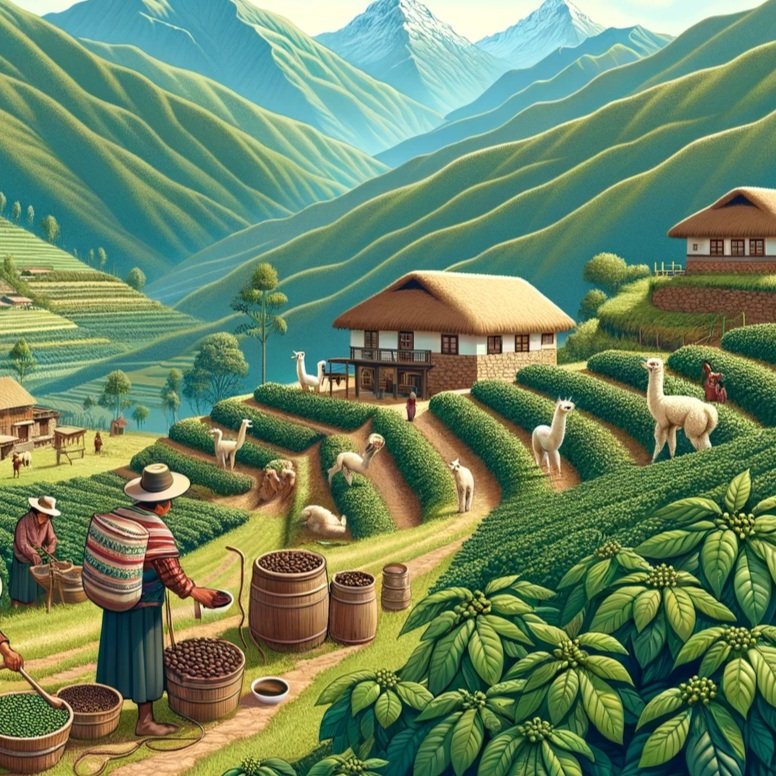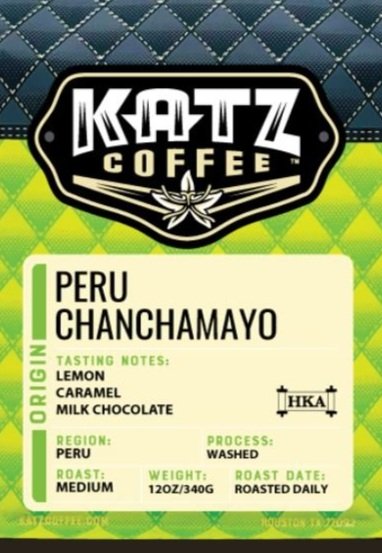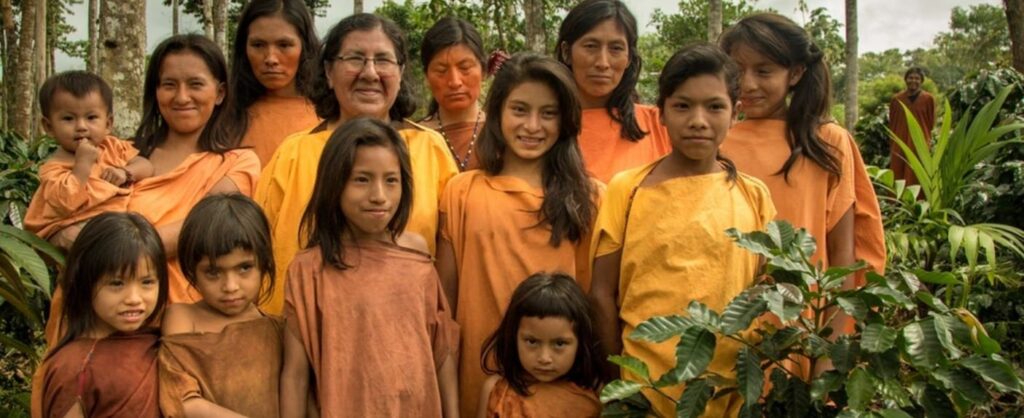Introduction
Peru, a land of ancient cultures and breathtaking landscapes, is also home to one of the world’s most cherished beverages: coffee.
In this blog, we will explore the rich tapestry of Peruvian coffee, from its economic impact to the unique characteristics of its beans. Coffee from Peru is not only exotic but also delicious.
Peruvian coffee is a hidden gem in the coffee industry. Grown in the high-altitude regions of the Andes Mountains, Peruvian coffee beans benefit from the country’s ideal climate and geography. The combination of rich volcanic soil, ample rainfall, and high altitudes creates the perfect conditions for cultivating exceptional coffee
Coffee from Peru- Economics & Production

Coffee production in Peru is a complex and fascinating process, deeply rooted in the country’s diverse landscape and culture.
The country has consistently ranked among the top 20 coffee-producing nations in recent years.
Peruvian coffee production has been known to fluctuate between approximately 3 to 4 million bags annually. Each bag typically weighs about 60 kilograms (132 pounds).
Peru’s diverse geography plays a crucial role in coffee production. The country has three main geographic regions: the coast, the Andes mountains, and the Amazon rainforest.
Most of coffee from Peru is grown in the Andean region, where the high altitude and climate are ideal for coffee cultivation.
The unique microclimates across different regions of Peru contribute to a wide range of flavor profiles in Peruvian coffee.
The high altitudes, often above 1,000 meters, provide the perfect conditions for Arabica coffee, which is the predominant variety grown in Peru.
Organic Farming
The majority of coffee in Peru is produced by small-scale farmers. As we discussed in the blog article about Colombia, growers in Peru as well depend heavily on coffee economy. These farmers often work on land that has been passed down through generations, using traditional methods of cultivation.
Organic farming is prevalent in Peru, with many coffee farms being certified organic. This is partly due to the natural farming methods that have been traditionally used, which involve minimal chemical inputs.
Coffee from Peru is mainly harvested between April and September, with the peak season varying depending on the region.
The harvesting is mostly done by hand, ensuring that only ripe cherries are picked.
This labor-intensive process contributes to the high quality of Peruvian coffee.
Coffee is one of the top crops in Peru along with potatoes, asparagus, grapes, avocados, and quinoa. However, in terms of export revenue Coffee is indeed the topmost crop.
Employment Opportunities
Over 200,000 people are employed across the coffee supply chain in Peru. From small-scale family farms to large commercial estates, coffee farming provides livelihoods to countless Peruvians.

Coffee Consumption
Coffee consumption in Peru presents an interesting dynamic. While Peru is known globally for its high-quality coffee production, traditionally, the domestic consumption of coffee within the country has been relatively low compared to its production.
Historically, the best quality coffee produced in Peru has been exported, and the domestic market often received lower quality beans.
However, this trend is changing. There is a burgeoning coffee culture in urban areas, particularly in cities like Lima. This shift is partly driven by a growing middle class, increased interest in gourmet and specialty coffees, and the influence of global coffee trends. Cafes and coffee shops serving high-quality, locally sourced coffee are becoming more popular. Initiatives such as coffee festivals, competitions, and educational programs aim to enhance the appreciation of high-quality Peruvian coffee among locals.
Starbucks, the global coffeehouse chain, first entered Peru in 2003! Last I checked there were about 89 Starbucks in Peru. https://www.silverdoorapartments.com/blog/which-country-has-the-most-starbucks-per-1000000-inhabitants/

Regions Producing Coffee Beans

Peru’s diverse geography, encompassing the Andes mountains, Amazon rainforest, and coastal regions, creates a variety of microclimates ideal for coffee cultivation. Several regions across the country are renowned for their coffee production, each contributing unique flavor profiles to coffee from Peru.
- Chanchamayo Valley (Junín Region)
- Chanchamayo is arguably the most famous coffee-producing region in Peru. Known for its ideal growing conditions, it produces coffee that is aromatic with bright acidity and a variety of fruity and floral notes.
- Cajamarca (Northern Peru)
- Cajamarca is renowned for producing high-quality coffee with rich flavors. Coffees from this region often have a full body and can feature notes of caramel and chocolate. The high-altitude conditions contribute to the coffee’s distinct taste.
- Cusco (Southern Peru)
- The Cusco region, particularly known for its high-altitude coffee farms, produces beans with a bright acidity and sweet, fruity flavors. The unique environmental conditions of the Andes in this area are ideal for growing specialty coffee.
- San Martín
- San Martín’s tropical climate contributes to the production of medium-bodied coffees with a mild acidity. This region has been gaining more recognition for its quality coffees.
- Puno
- Located near Lake Titicaca, Puno is known for its very high-altitude coffee farms. The coffee here is often distinguished by its floral and fruity notes, making it unique in Peru’s coffee landscape.
Coffee Beans grown in Peru
Peruvian coffee, predominantly Arabica, is renowned for its clean, mild profile with a bright acidity typical of high-altitude beans. Flavors often include citrus, floral, and berry notes, with occasional chocolate or nutty undertones.
These beans have a light to medium body, making them versatile and appealing to a broad range of palates. The quality is consistently high, thanks to meticulous processing methods, resulting in a well-balanced and crisp-tasting coffee.
What are the various bean types?
- Typica
- Typica is an Arabica coffee variety known for its balanced flavor profile and mild, clean taste.
- Bourbon
- Bourbon coffee beans are of the Arabica species and are appreciated for their sweetness and vibrant acidity.
- Caturra
- Caturra is a natural mutation of Bourbon and, therefore, falls under the Arabica category. It is known for its bright acidity and range of flavor notes.
- Geisha
- Geisha coffee beans are also Arabica beans. They are highly sought after for their exceptional flavor complexity.
- Pacamara
- Pacamara beans are a hybrid of Pacas (a mutation of Bourbon) and Maragogipe, both Arabica varieties. Consequently, Pacamara is also an Arabica coffee.
Fair Trade in Peru
Peru is one of the leading producers of fair trade-certified coffee. This certification ensures that farmers receive a minimum price for their coffee, which helps protect them from fluctuations in the global coffee market.
Fairtrade also emphasizes social and environmental standards.
One notable example is the Cooperativa Agraria Cafetalera Pangoa (CAC Pangoa) – located in the central rainforest region of San Martín de Pangoa. Pangoa became fair trade certified in the late 1990s. This certification has been crucial in helping the cooperative gain access to international markets and ensuring that farmers receive a fair price for their coffee.

The fair trade premium — additional money paid on top of the fair trade price — has been used for various community projects. These include funding education scholarships for members’ children, improving healthcare facilities, and investing in infrastructure.
Pangoa emphasizes sustainable and organic farming practices. They train their members on organic farming techniques, helping to improve both the quality of their coffee and the sustainability of their farming methods.
Despite challenges like market fluctuations and climate change, Pangoa has demonstrated resilience. They have diversified their production to include other products like cocoa and honey, providing additional income streams for their members.
Most famous Peruvian Coffee
Chanchamayo coffee, hailing from Peru’s central highlands in the Junín Region, is a celebrated variety renowned for its quality and distinct flavor profile.
Grown in the fertile Andean slopes and Amazon rainforest of Chanchamayo Valley, this coffee benefits from high altitude and a favorable climate. It features a medium body with mild to bright acidity, and a rich aromatic profile that includes fruity and floral notes, with common hints of citrus, berries, and sometimes chocolate or caramel.

Predominantly Arabica, the beans are cultivated mostly by small-scale farmers using traditional and organic methods, ensuring sustainability and quality. These shade-grown beans mature slowly, enhancing their flavor.
Internationally recognized, Chanchamayo coffee is a major Peruvian export, prized in the specialty coffee market for its unique taste.
Locally, Chanchamayo coffee might be more affordable due to lower shipping and distribution costs. Prices can range widely, but as a rough estimate, high-quality Chanchamayo coffee might cost anywhere from 20 to 60 Peruvian Soles per pound (approximately $6 to $18 USD) when bought directly in Peru.
Conclusion
Coffee in Peru is a testament to the country’s rich natural diversity and cultural heritage.
As the world continues to discover the unique flavors of Peruvian coffee, it stands as a symbol of the country’s potential.

